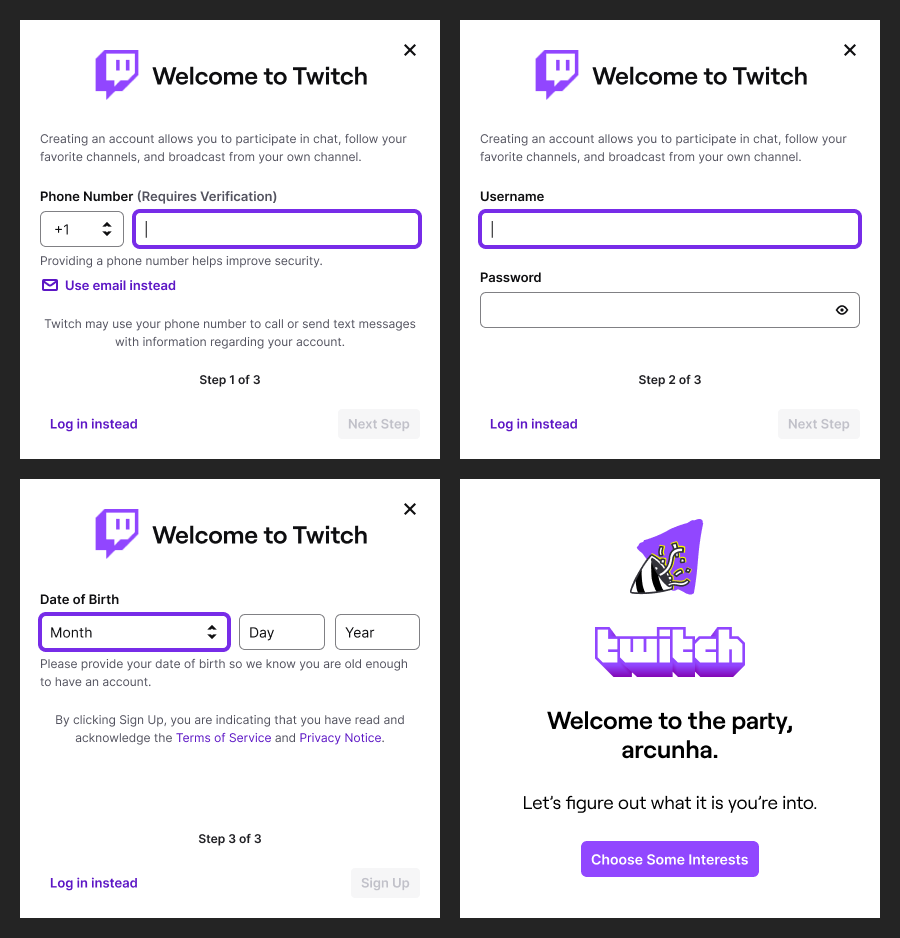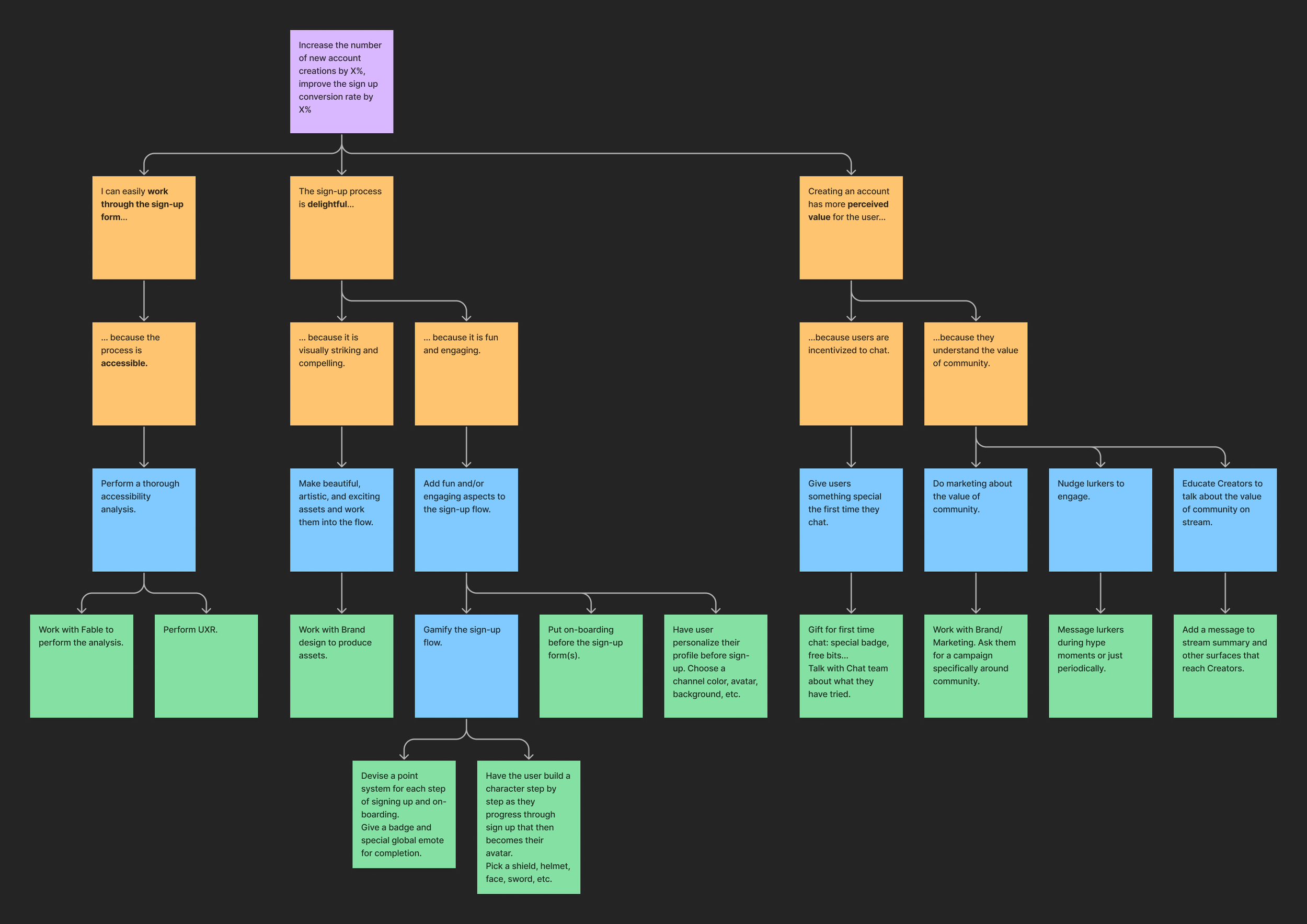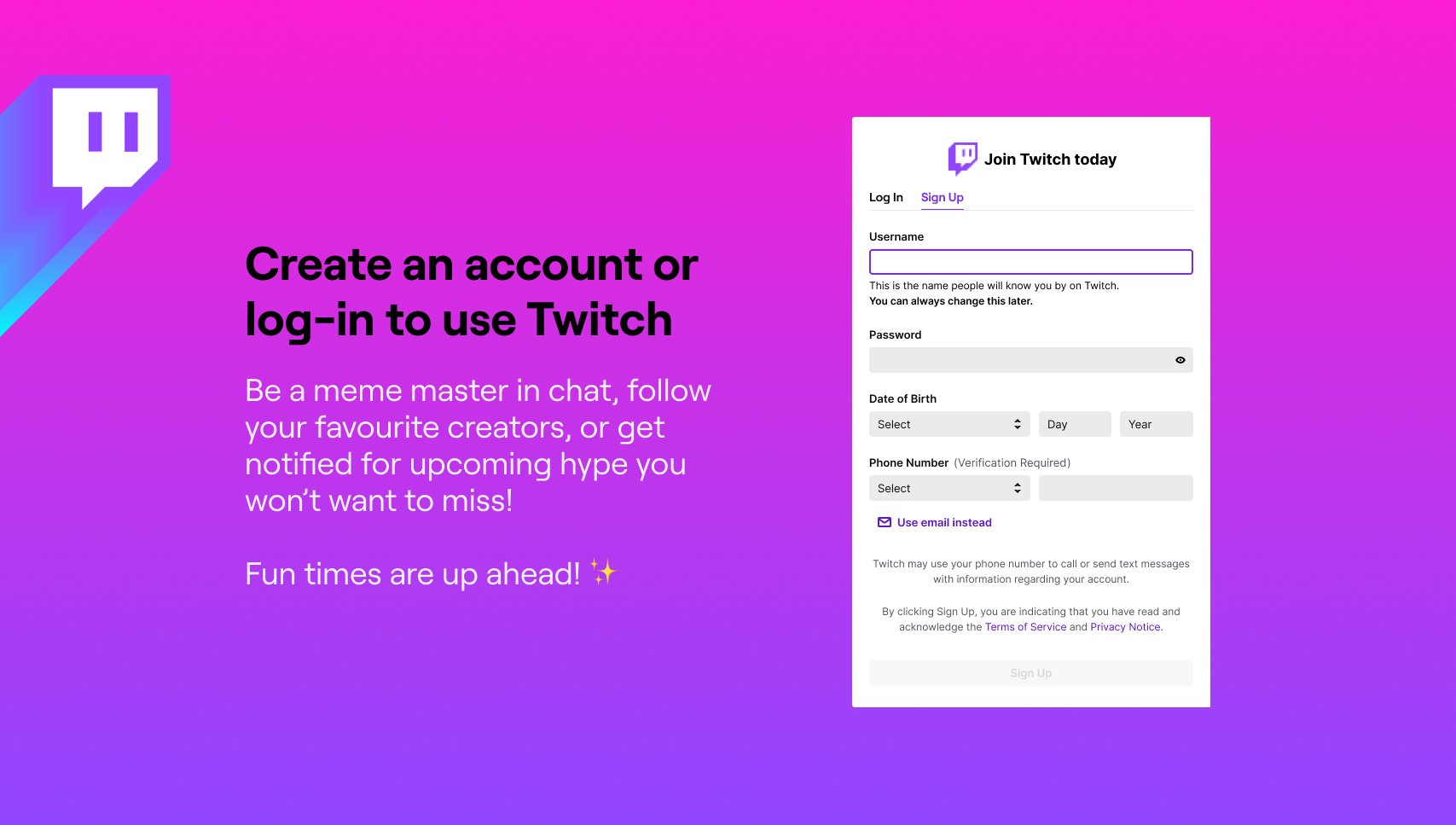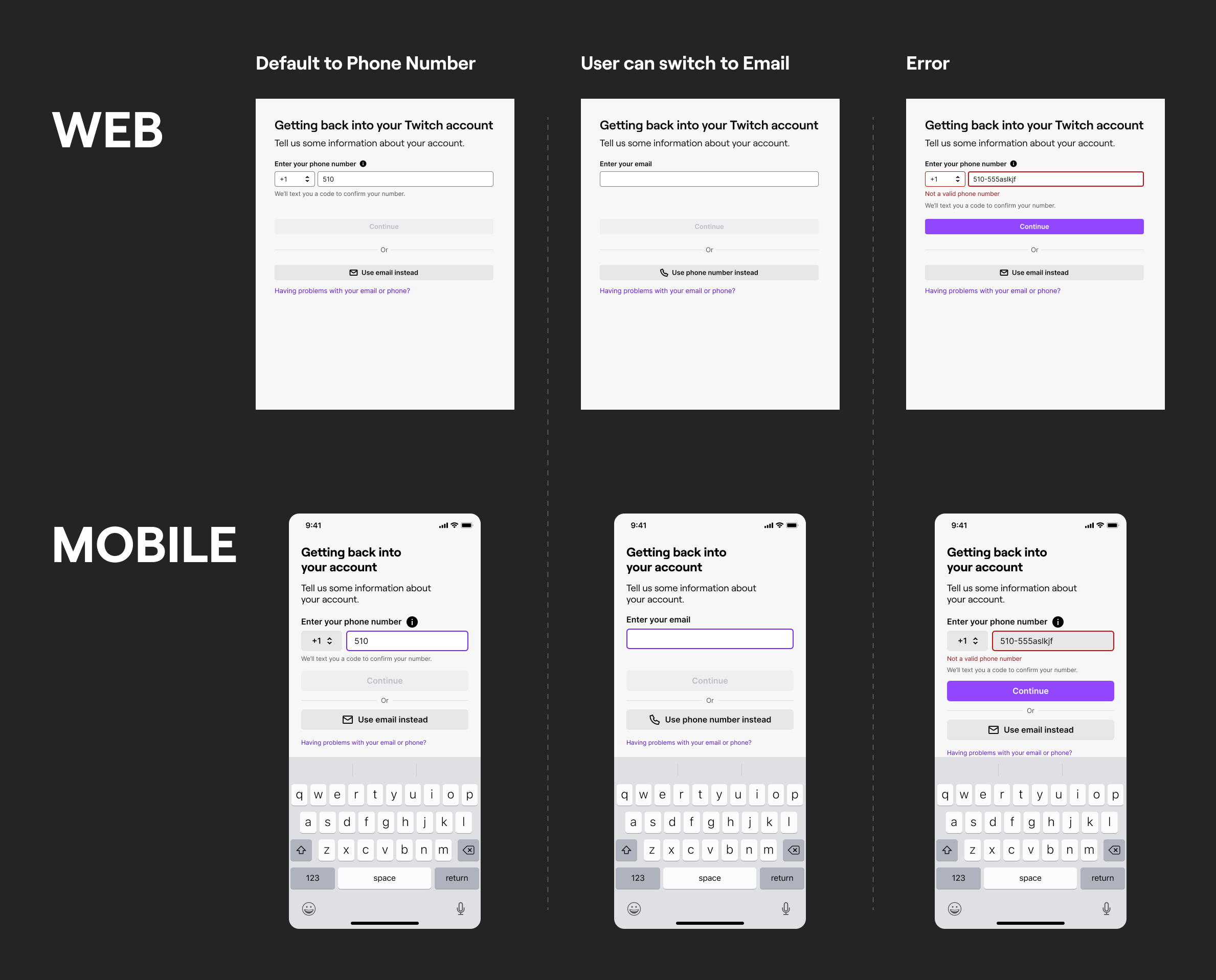
Identity: Sign-Up & Login
As the lead designer for the Twitch Identity team, my focus was on ensuring that Twitch users had an easy time creating their account, logging in, and managing all aspects of their identity on the platform.
Segmented sign-up flow experiment
Research data showed that the vast majority of Twitch viewers were “lurkers” who watched content without creating an account and logging in. Users are unable to participate in Chat without logging in, and therefore were unlikely to find a sense of community. Finding community in one or more channels is what makes a “hardcore” user who is willing to spend money to support the creator. Our team’s charter was to find ways to incentivize users to create an account and login.
One of our first experiments was to break the sign-up flow into three screens rather than one long form.
The hypothesis was that users would feel less intimidated by shorter looking forms and would be more likely to finish signing up.
The results were positive: there was a 1.5% increase in users who successfully completed the sign-up flow.
Brainstorm using an Opportunity Solution Tree
Working closely with my Product Manager teammate, we brainstormed for experiment ideas. An Opportunity Solution Tree allowed us to quickly consider a wide breadth of options and prioritize them.
Based on this exercise we decided on our next three experiments:
A “login wall” to see if users would create an account and log in or just leave (see below).
Improvements to the account recovery flow (see below).
A username generator to help users find an available username. This experiment never came to fruition due to a re-org.
Login Wall
We ran an experiment with 1% of logged out users to see how they would react to a “login wall” that did not allow them to see or interact with Twitch unless they created an account and logged in.
Half of the users allocated to the experiment came from the Homepage and half came from the Channel Page.
The results were not favorable for either segment. Most users chose not to watch Twitch rather than create an account and log in. But it was a successful experiment in the sense that we learned what we wanted to know.
Account Recovery
While running the above experiment, we also targeted low hanging fruit…
We knew the account recovery flow was problematic; both error prone and counter-intuitive.
Also, after completing intensive accessibility training through Fable, I realized that the flow was practically impossible to complete with a screen reader because of the live error response that dynamically changed as the user was typing.
I simplified the flow on both web and mobile. And changed the error checking to happen on form submit.
Users could now more easily recover their accounts leading to more logins.





